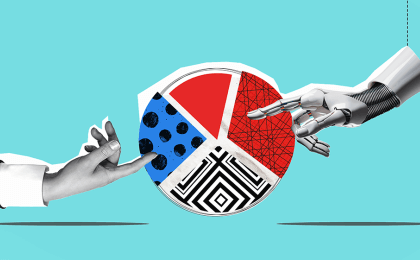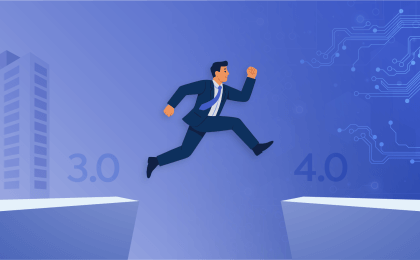The hiring process is critical to the success of any organization, and so it follows that, as an employer, you’d want to take all the time you need to make the best possible hiring decision. From gathering information about your candidates to building consensus among your hiring team, you want to feel confident about the candidate you ultimately choose. But the time and deliberation you put into the decision should never come at the expense of a speedy and efficient hiring process.
No matter how much due diligence you perform in the information-gathering stage, you’ll never know with absolute certainty that the candidate you choose will turn out to be a successful hire. Information can certainly help you increase the chance of success, but at a certain point, employers have to accept a certain amount of uncertainty in the hiring process and just make a decision. In essence, this is accomplished by finding a happy balance between hiring quickly and hiring for quality.
Of course, this balance depends a lot on your particular industry and the specific role for which you’re hiring. The average time to hire in the United States is about 24 days, but this obviously varies widely between types of roles. Most candidates for a VP or Director level role are prepared to withstand a lengthier and more thorough hiring process, but early-career job seekers may have different expectations.
Getting the balance wrong between speed and quality does come with some serious risks, which is why it’s so important to hire as efficiently as possible by incorporating the most predictive and effective hiring factors into your hiring process. Here’s what could be at stake if you’re hiring process is just too slow:
Poor candidate experience
One of the most common complaints from job candidates is that the hiring process is too slow or long. This has a negative impact on candidate experience. Taking too long to move candidates through the process or to make a final offer can cause your employer brand to take a hit. Candidates may even believe that they are being ignored or that they are out of the running completely, leading them to set their sights on other job opportunities.
Ultimately it can be acceptable to have a long hiring process as long as you fully communicate what stage your candidates are in, and what they can reasonably expect in terms of a timeline. Being unresponsive will only cause them to be more anxious and dissatisfied with the wait.
Loss of revenue
Leaving positions open for too long means that work isn’t getting done. The longer those positions are open, the more damage that is done. The costs are even greater for highly skilled positions in tech, for which the average time to hire can be 70-90 days. Vacant sales roles also lead quite directly to a loss of revenue, because every empty sales seat is equivalent to revenue not earned each day.
Loss of your best candidates
But probably the most critical risk of a slow hiring process is that it could cause you to lose out on some of your best candidates. Candidates who are in high demand are more likely to get offers from other companies, and if those companies make an offer before you, your candidates may just take it. Demand for great candidates is tougher than ever, meaning that a needlessly prolonged hiring process is a serious liability.
While it’s important to keep your hiring process speedy and efficient, going too fast is not without risk. But there’s really only one major risk of making a hiring decision too quickly, and that is the risk of making the wrong decision and ultimately lowering your quality of hire.
However, hiring faster doesn’t necessarily have to lead to a loss in quality. By optimizing your hiring process, you can strike a balance between high quality and speed. Here are a few tips for speeding up your hiring process without sacrificing quality:
Incorporate more predictive hiring tools
Predictive hiring tools help you increase the likelihood that your candidates will succeed on the job. Some of the most predictive hiring factors include structured interviews, some forms of AI, and pre-employment tests like cognitive aptitude and personality tests. We know these tools are predictive because they are backed by years of research correlating them with job performance. By incorporating more predictive hiring tools, you can make a more informed hiring decision faster by learning things about your candidates that you wouldn’t have been able to learn with a traditional resume and interviewing process.
Standardize your hiring process
Standardizing your hiring process isn’t just a great way to ensure objectivity and reduce bias in your hiring process; it’s also a highly effective means of speeding up your hiring process. A standardized process means the process is scoped out for you in advance, so you know what path each candidate should take, and all the decision-makers are already aware of their roles in the hiring process. Some examples of how to standardize the hiring process include standardizing the precise steps each candidate goes through, creating a structured interview process, creating template emails for communicating with candidates, and setting general guidelines for how long each step should take.
It may take some up front effort to set up a standardized process, but if it is designed correctly, the standardized process should help you hire a lot faster.
Keep your candidates organized
Standardizing your process can help you keep your candidates organized as well. If you have a set process for each applicant, you can make sure none of your candidates slip through the cracks. When it comes to organization, it helps to turn to technology. ATS and HRIS platforms can help you track and organize your candidates as they move through a standardized process. This doesn’t just improve candidate experience, but it also helps you stay on schedule for hiring in a timely manner.
The hiring process is a delicate balancing act between time and quality; finding the right balance for you depends on the factors that are most important to your organization, as well as the competitive landscape for talent in your industry.





